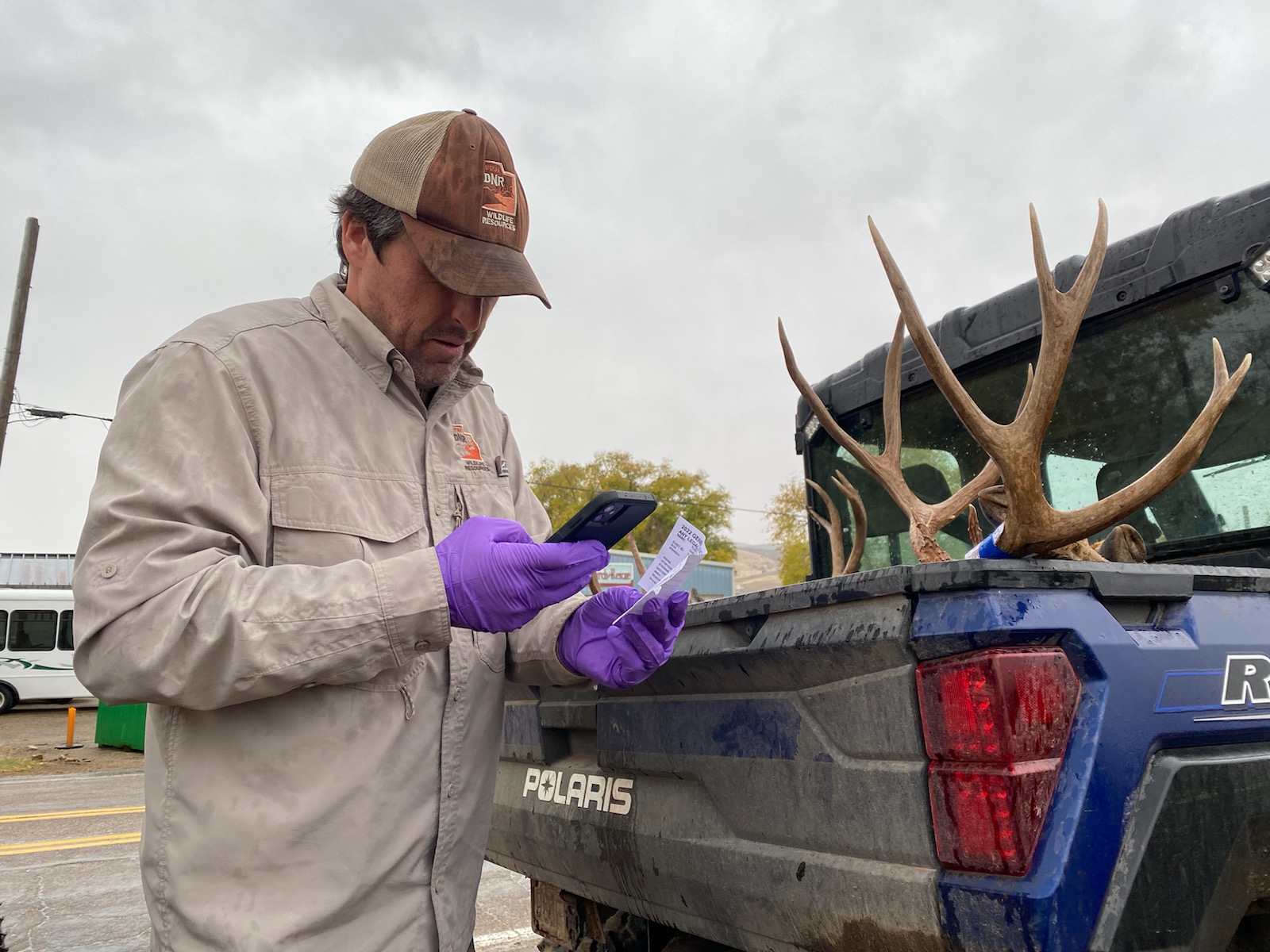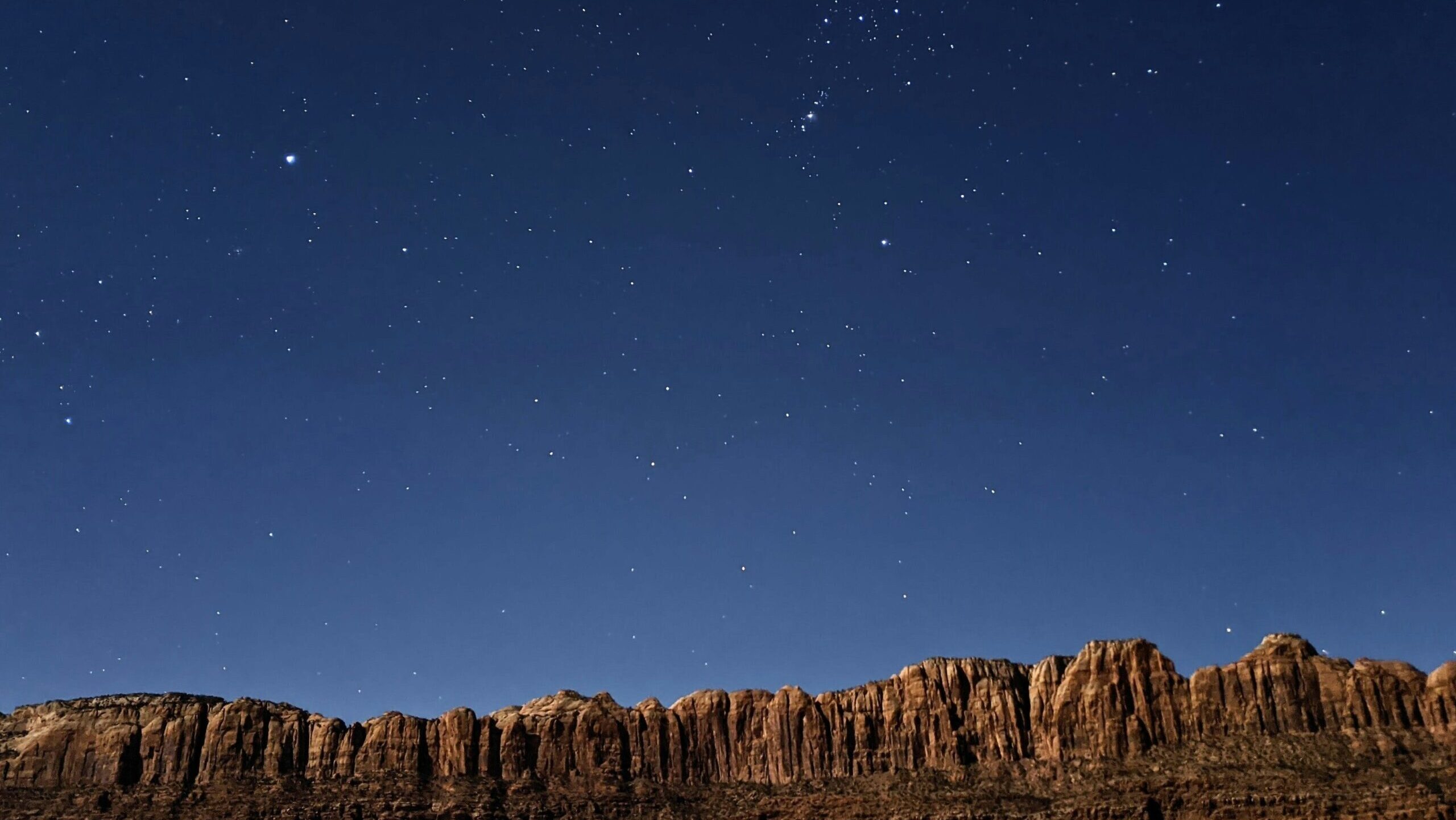Some information may be outdated.
Chronic wasting disease, or CWD, is a neurodegenerative brain disease that affects cervids (a family that includes deer, moose, and elk) and has been spreading in wildlife in North America since it was first detected in Colorado in the 1960s. The Moab area has the unfortunate distinction of having the highest known rates in Utah of CWD among mule deer, according to monitoring data collected by the Utah Division of Wildlife.
The DWR recently began a new study of mule deer in the Moab area, hoping to find out more about their migration patterns and where CWD may be likely to spread next.
What is CWD?
Chronic wasting disease is a type of transmissible spongiform encephalopathy (TSE)—that is, a disease caused by infective misfolded proteins, called prions, that cause the brain to deteriorate. It was first detected in captive deer in a research facility in Fort Collins, Colorado in 1967. It can also infect elk, moose, reindeer, and caribou; it’s most prevalent in deer.
Sick animals will progressively lose weight and behave abnormally: they may have a drooping stance and develop tremors; they may also drink, urinate, and salivate excessively. An infected animal may live up to several years before showing symptoms of CWD, but the disease is always fatal—once symptoms appear, the animal will die within months.
CWD can be transmitted from one animal to another through urine, feces, saliva, or blood that contains the prions that cause the disease. Prions can also persist in the environment for years.
“They’re chemically and environmentally resistant to degradation,” said Aaron Bott, conservation outreach manager for the DWR. Animals can get sick from prions that remain in soil or plants where a CWD-positive animal has died, or from feces or urine from an infected animal, even if the individuals never come into contact.
By now, the disease has been detected in 29 states, as well as in Canada, Norway, Finland, Sweden, and South Korea. The first case found in Utah was near Vernal in 2002; it’s now been found in seven Utah counties: Carbon, Daggett, Sanpete, Uintah, Utah, San Juan, and Grand. It’s still relatively rare in Utah, but researchers have observed that once the disease reaches a certain threshold—an infection rate of about 5%—it begins to spread much more quickly. At that point, biologists begin to have concerns about the potential for the disease to cause population declines.
According to the DWR’s Chronic Wasting Disease Management Plan, “a 5% prevalence of infection likely has been reached in Unit 13,” an area that includes the La Sal Mountains, the town of Moab, and north to Interstate 70.
There is no vaccine or treatment for CWD, and it’s difficult to detect—there’s no reliable way to diagnose a living animal, and no effective way to denature or remove prions from the environment.
“Chronic wasting disease is a nightmare,” Bott said. “It’s really scary.”
Can it harm humans?
There are no recorded cases of CWD infecting humans, but the Centers for Disease Control and the DWR recommend not eating meat from a CWD-positive animal.
There is concern that CWD could become a threat to humans. Bovine spongiform encephalopathy, better known as mad cow disease, is a similar fatal disease caused by prions that affects cows; a variant of mad cow has spread to humans through the consumption of contaminated beef. In the 1990s, an outbreak of mad cow disease in the United Kingdom caused global alarm.
While there are no known human cases of CWD, according to the CDC, “some animal studies suggest CWD poses a risk to certain types of non-human primates, like monkeys, that eat meat from CWD-infected animals or come in contact with brain or body fluids from infected deer or elk. These studies raise concerns that there may also be a risk to people.”
Hunters can have their harvests tested for CWD by the DWR. Usually officials test the animal’s lymph nodes. If a harvested animal tests positive for the disease, the DWR recommends disposing of it—in that case, the agency will issue the hunter a new hunting tag for the following year in the same unit. For prions to be destroyed, infected carcasses must be incinerated at a high temperature.
Management strategies
The DWR’s CWD management plan says its goal is “to slow the spatial spread of the disease, to prevent further increase in CWD prevalences in affected areas, and detect new infection foci as early as possible.” CWD is difficult to tackle because there are no treatments or vaccines, and because the prions that cause it are so persistent. There are some strategies that have been tried in other states and that the Utah DWR may employ.
One approach is “hot-spot culling,” or localized reduction of population densities in infected areas. Adjusting hunting regulations to target older bucks may also help reduce prevalence, as those individuals are more likely than younger deer and female deer to be infected with CWD.
The DWR has already stopped all translocation of deer, and there are regulations prohibiting bringing carcasses across state boundaries. DWR officials also urge the public not to feed or bait deer—the practice encourages deer to congregate more than they naturally would, increasing chances for CWD transmission. The agency also encourages hunters in areas known to have infection to have their harvests tested. Hunters in Southeast Utah should call the Price office of the DWR at 435-613-3700 to find out more about testing.
Moab study
The DWR is trying to get a better understanding of CWD through monitoring and research. In Moab, biologists want to find out more about the habits and range of the local deer populations.
Virginia Stout is the state wildlife veterinarian, and she’s taking part in collaring deer for the study.
“I’m basically the head of disease management in the state for all species,” Stout said. She tracks “anything that causes mortality or health problems” in wildlife, including toxins, bacteria, viruses, parasites, and prions. Major concerns for Stout include pneumonia in bighorn sheep and avian flu, and of course, she added, “CWD is very high on my list of concerns.”
The researchers plan to collar about 10 urban deer in the Moab valley, as well as deer from a distinct population that lives primarily in the La Sal Mountains. Stout explained the procedure: a deer is shot with a dart containing a sedative that causes the deer to lie down within about 10 minutes. Then the researchers can approach and conduct a quick exam, take some blood and tissue samples, and attach a GPS collar. Blood and tissue samples will be used in studies looking for a way to reliably diagnose CWD in live animals—as of now, the best methods for detection are only usable on dead animals.
After these steps, researchers administer a reversal drug that revives the deer within another few minutes.
The GPS collars will transmit the animal’s location to biologists at regular intervals, and the points are uploaded to a program that can animate the animal’s movements and create a map of its home range. Researchers hope to find out whether the urban deer in Moab migrate, or if they stay in town all year, and whether they overlap with other herds within the La Sal Mountains unit. Knowing more about the habits and movements of deer in this CWD hot spot will help inform the agency’s management decisions.
Appreciate the coverage? Help keep local news alive.
Chip in to support the Moab Sun News.





